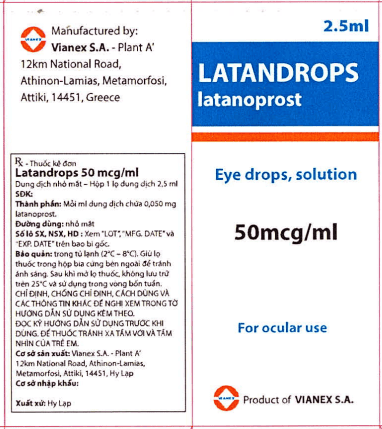This is an automatically translated article.
From the day a baby is born, their eyes play an important role in allowing them to receive information, see and explore the world around them. Newborn vision is not yet fully developed, but it develops over time. Parents need to have knowledge about measures to support visual development for children.1. When does a baby's vision develop?
Infant vision develops gradually between 6 and 8 months of age. At this time, children are able to see the world almost like adults.While babies' eyes are capable of seeing well at birth, their brains aren't ready to process all that visual information yet, so things will get pretty fuzzy for a while. As a child's brain develops, so does his visual ability, giving him the tools he needs to understand and manage his surroundings.
Although in the first months of life, babies can only see their parents' faces when held at close range, the baby's field of vision will still be steadily developing month by month.
2. The process of infant visual development
At first, babies cannot see beyond 20 to 30 cm. At this distance, the baby can only recognize the face of the person holding the baby. Babies can detect light, shapes and movement, but in the first months of life all is quite dim. Appropriately, a parent's face is what is most appealing to a child this age (followed by high-contrast textures like a checkerboard), so make sure to give your baby plenty of opportunities to look at them. close-up of things.2.1 1 month old At birth, babies don't know how to use their eyes, so they may move randomly or move their eyes to the same side. During 1 month or the next, your baby will be able to continuously focus both eyes and follow a moving object. Children may also enjoy eye play with parents: With the parent's face very close to the child, move the parent's head slowly from side to side, with the child's and parent's eyes looking at each other.
2.2 2 months old Your baby can see colors from birth, but often has trouble distinguishing similar tones, such as red and orange. That's one reason kids prefer black and white or high-contrast models.
Over the next few months, the infant's brain gradually develops and works to learn to distinguish colors. As a result, children may begin to show a preference for bright primary colors and more intricate and detailed designs. Encourage this development by showing your child pictures, pictures, books and toys. Over the next few months, your child will also perfect his object tracking skills.
2.3 4 months old Babies begin to develop depth perception. Children have traditionally had difficulty determining the position, size, and shape of an object, then receiving messages from the brain to the hand to reach out and grasp it.
When babies are 4 months old, they have both motor development to handle tasks and brain maturity to coordinate all necessary movements and complete tasks. You can help your child practice by giving her easy-to-grasp toys like rattles (or else she'll take your hair, glasses, or earrings).

Khi trẻ được 4 tháng tuổi, trẻ có cả sự phát triển về vận động để xử lý công việc và sự trưởng thành trong não bộ để phối hợp tất cả các chuyển động cần thiết và hoàn thành nhiệm vụ
2.5 8 months old At this age, the baby's vision is almost mature in terms of sharpness and perception. Although a child's attention will be more focused on nearby objects, his vision is far enough to recognize people and objects in the room.
3. The role of parents when training children's vision
Make sure your child's doctor checks your child's eyes at each scheduled health and wellness visit. Your doctor will examine the structure and alignment of your child's eyes and their ability to move them correctly, as well as look for signs of congenital eye problems or other problems. Parents should be sure to discuss with their child's doctor if the father and/or mother have a family history of serious eye problems - especially problems that appear during childhood.When a child is 3 or 4 years old, the doctor may test the child's vision (vision) using charts with pictures or letters. If your doctor detects any problems or if your child's family has a history of eye problems, they may refer you to a pediatric ophthalmologist. It is important to diagnose and treat eye problems early because some eye problems are difficult or impossible to correct.
Studies show that babies prefer human faces to all other patterns and images, so let your baby study yours by keeping your face close to your baby's (especially) is when the baby is born). Encourage children to be interested in basic colors and palettes as they get older.

Khi trẻ được 3 hoặc 4 tuổi, bác sĩ có thể kiểm tra khả năng nhìn của trẻ (thị lực) bằng cách sử dụng các biểu đồ có hình ảnh hoặc chữ cái
4. When to pay attention to infant vision?
The doctor will check your child's eyes at regular visits, but if you notice something that doesn't seem right, bring it up and talk to your child's doctor right away. Some signs of visual abnormalities in infants include:The baby is not following an object such as a parent's face or a rattle with both eyes by the time he is 3 or 4 months old. Your baby has trouble moving one of his eyes in all directions. Your baby's eyes are blinking and can't stay still. Most of the time, your baby's eyes are crossed, or one or both of his eyes tend to turn inward or outward. This may be normal for the first few days of a child's life, but tell your doctor if it lasts longer than that. One of the child's pupils is white. Your child's eyes appear to be sensitive to light and constantly water or discharge. If a baby is born prematurely - especially one born prematurely has an infection or needs oxygen therapy - then he or she is at increased risk for a number of eye problems, including astigmatism (blurred vision), nearsightedness (nearsightedness). , retinopathy of prematurity (abnormal growth of blood vessels that can lead to blindness), and strabismus (misalignment of the eye). Your baby's doctor will refer to your baby's prematurity when evaluating your baby's eyes and make referrals if necessary.

Trẻ sinh non có nhiều nguy cơ mắc một số vấn đề về mắt như loạn thị, cận thị, bệnh võng mạc do sinh non,...
As a key area of Vinmec Health system, Pediatrics Department always brings satisfaction to customers and is highly appreciated by industry experts with:
Gathering a team of top doctors and nurses in Pediatrics : including leading experts with high professional qualifications Comprehensive services : In the field of Pediatrics, Vinmec provides a chain of continuous medical examination and treatment services from Newborn to Pediatric and Vaccine,... International standards to help parents take care of their baby's health from birth to adulthood Specialized techniques: Vinmec has successfully deployed many specialized techniques to help treat difficult diseases in Pediatrics effectively. Professional care: Vinmec also pays special attention to the treatment space, creating a comfortable play space for children to help improve the efficiency of medical examination and treatment.
Please dial HOTLINE for more information or register for an appointment HERE. Download MyVinmec app to make appointments faster and to manage your bookings easily.
Reference source: babycenter.com












